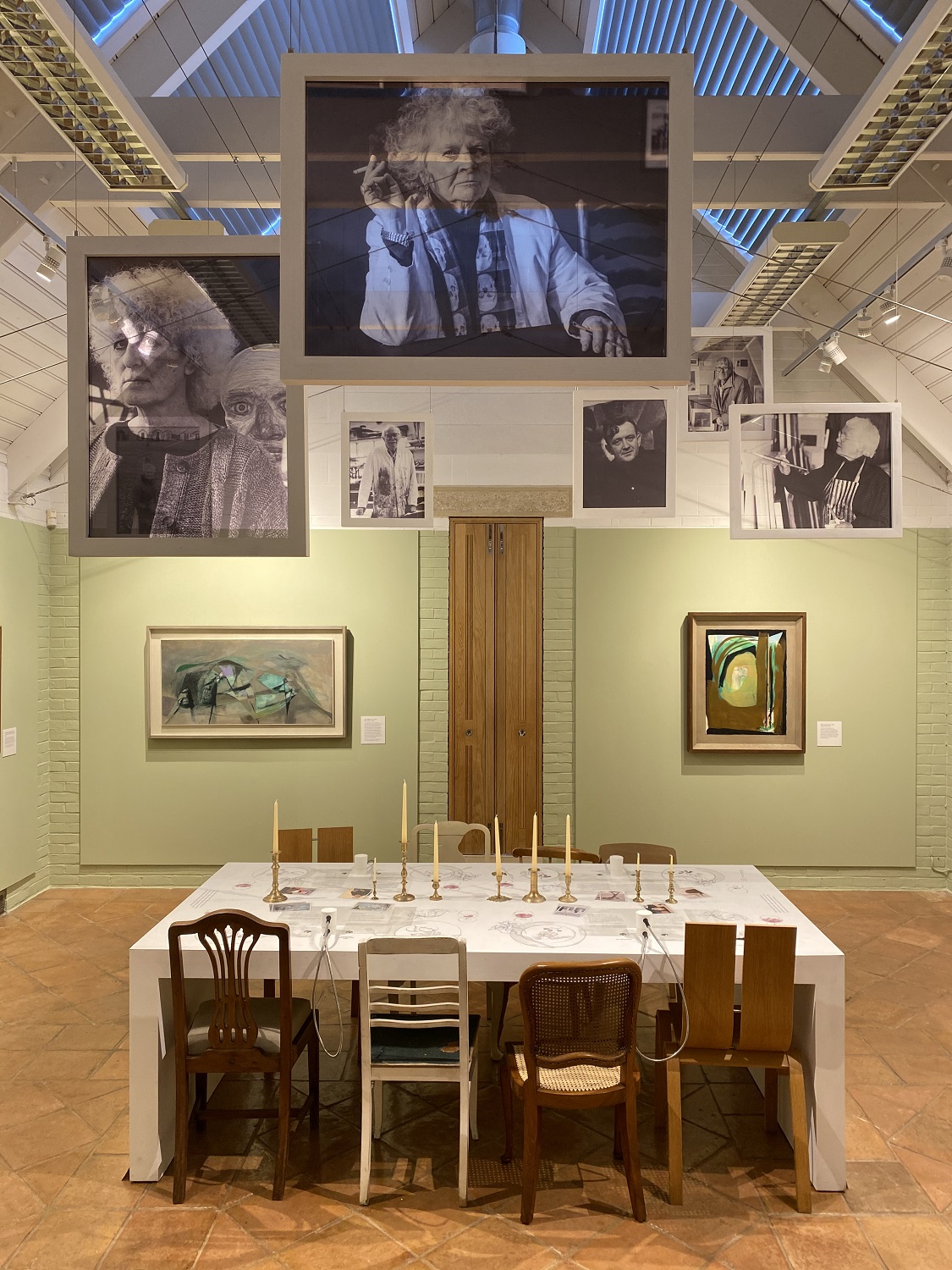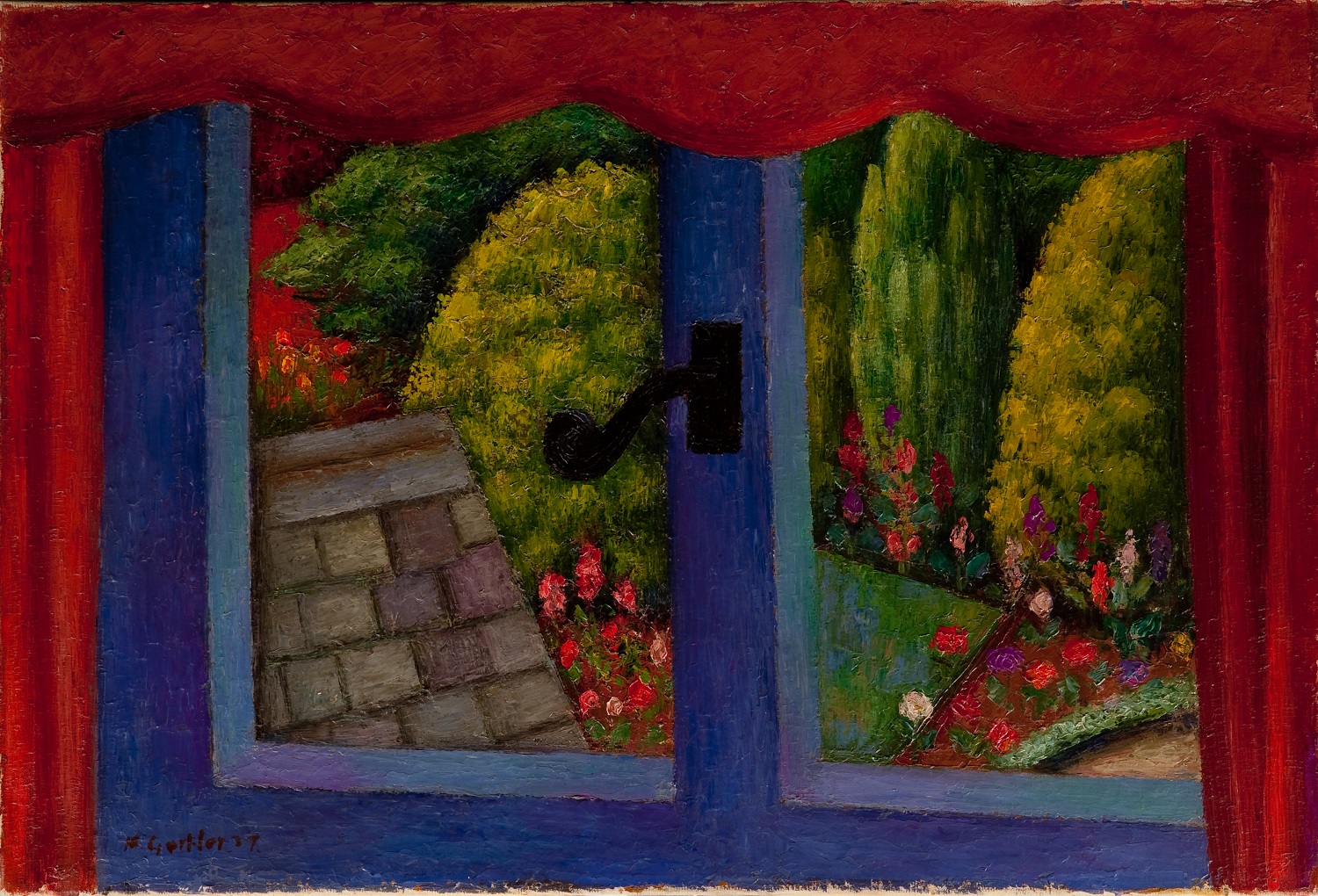In the first of a series of exhibitions selected from The Jerwood Collection, intimacy and personal friendships energise works spanning decades
The Jerwood Collection has, for the past 28 years, acquired a formidable collection of artworks from leading British artists of the twentieth and twenty-first centuries. A Year with the Jerwood Collection at Harley Gallery in Worsksop presents over 50 works from the collection by both historical artists such as Barbara Hepworth, Henry Moore, and Elisabeth Frink to contemporary artists such as Chantal Joffe, Rose Wylie and Sofia Mitsola, in a series of exhibitions that will run until 2022. The first exhibition, A Curator’s Choice, has been selected by the Jerwood Collection’s director-curator Lara Wardle. Wardle’s personal interests in the artworks have played a central part in her selection, each piece featuring a text alongside it explaining its inclusion. Wardle’s idiosyncratic decision-making process makes each piece quietly fascinating and what could have been a prosaic exhibition of mainly modernist painting and sculpture, by mostly dead artists, is avoided by the inclusion of something quite simple – their stories. These document the interconnected histories and relationships between artworks and artists, and between artists themselves. It is an approach perhaps often maligned by contemporary exhibitions, but here everything feels very human and distinctly personal; even to the degree that the artists, some of whom are long dead, are given new life.

This liveliness is dramatized by an interactive display in the form of a dining table. It is in this communal, homely space that the artists on show can be heard chattering through small hand-held speakers. Sitting under hanging portraits of Maggi Hambling, Elisabeth Frink, John Wells and Adrian Heath, among others, it’s possible to hear each interviewed for the British Library project National Life Stories: Artists Lives. Elisabeth Frink discusses her vivid dreams of WWII bombers above her home in Suffolk and the nightmares that plagued her when she’d fly over a decimated countryside. Maggi Hambling recounts ambling encounters with odd characters at the local pub, future subjects of her work, visitations often so fleeting that she might only have time enough to paint a portrait with one eye in between the sipping of a pint and the drag of a cigarette. One of the more harrowing tales involves the painters Adrian Heath and Terry Frost who shared more than a similar palette and abstract style, having first met in a German prisoner- of-war camp. It was there that Heath taught Frost how to paint as a remedy for the traumas they’d suffered, encouraging a friendship that would endure throughout their lives.

These biographical details influence our reading of the works significantly. Frink’s obsession with hounds, horses and masculine figures is drawn into focus by the knowledge of her past. The drawing, Figures in Motion (1955), depicts two men locked in mortal combat, and seems directly influenced by her being the daughter of a cavalry captain who was feared lost at Dunkirk. The defiantly stoic and individualistic portrait of Frances Rose II (1973) is of Hambling’s neighbour in Battersea, an 80-year-old widow Hambling was close to, and the portrait reveals a tender knowledge and admiration for this matriarch with gnarled, overworked fingers. These intimate relationships, between paintings and painters and subjects, curators and artworks, are the driving force of this show.

Though these shared histories frequently seem distant they bleed into more relevant contemporary discourses working beneath the surface, particularly when it comes to the representation of women in art. Here women are centre stage, with many works expressing a knowledge of the female experience, whether the youthful power and sexual agency deployed in Sofia Mitola’s Evil Eye (2019), in which three slender imposing women gaze unflinching at the viewer, one with a whip in hand; or the knowing motherly glance in Chantel Joffe’s Esme (2014), as she studies a petulant child. The breadth and nuance of female experience is explored. The show’s strength is to present these contemporary works by women artists in the wider context of twentieth-century art.And yet, it is the personal dialogues, and the comfort of this human perspective that elevates this show and reveals meaningful encounters that might otherwise have been overlooked. At a time of distance and estrangement, such intimacy and proximity seems a necessary remedy.
The Jerwood Collection: A Curator’s Choice is at Harley Gallery, Worksop, until 8 August. The next exhibition in the series, Coast, Country, City, opens on 20 August
This article is part of Remark, a new platform for art writing in the East Midlands by ArtReview in collaboration with BACKLIT. Read more here and sign up for the Remark newsletter here
